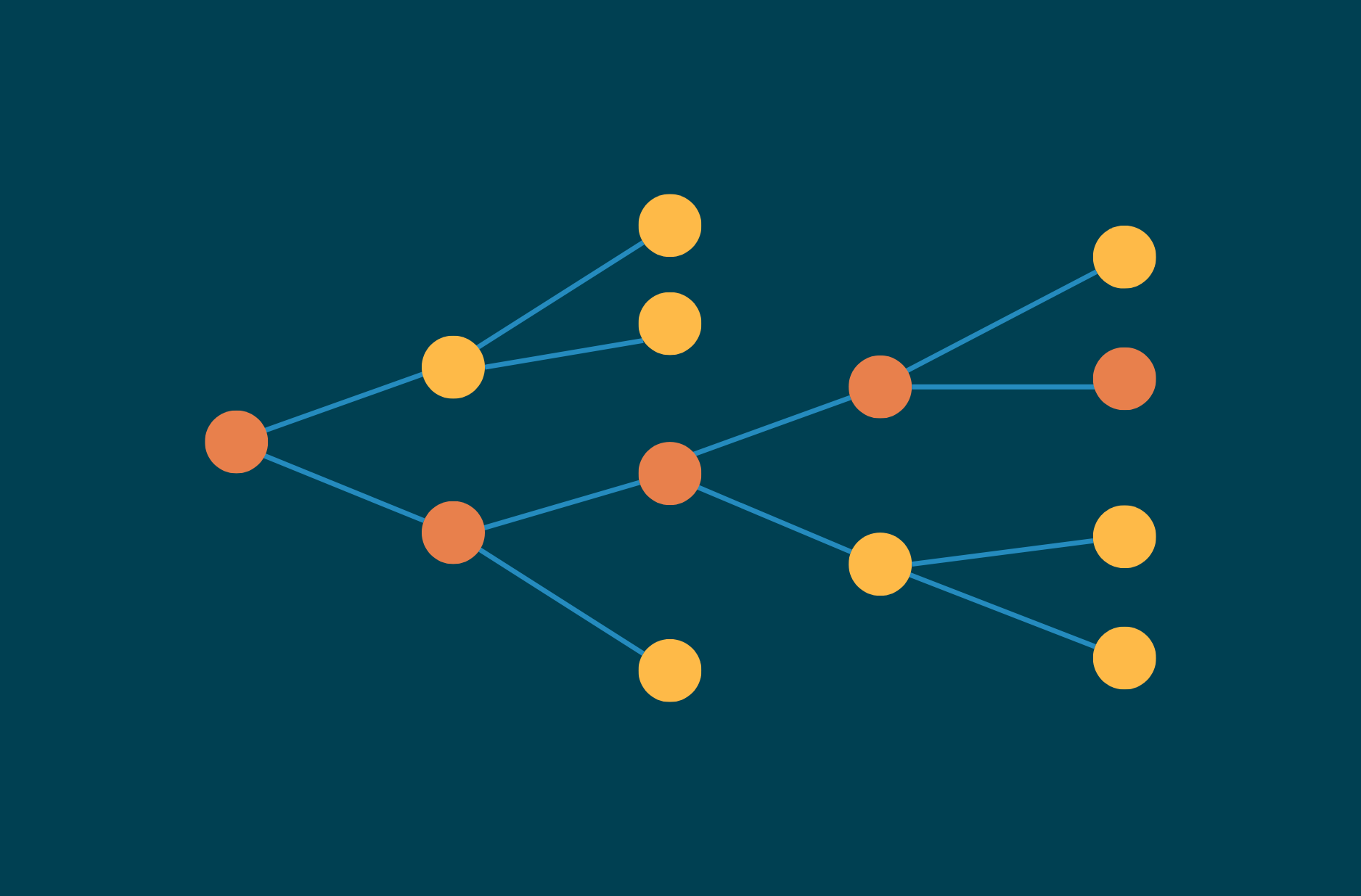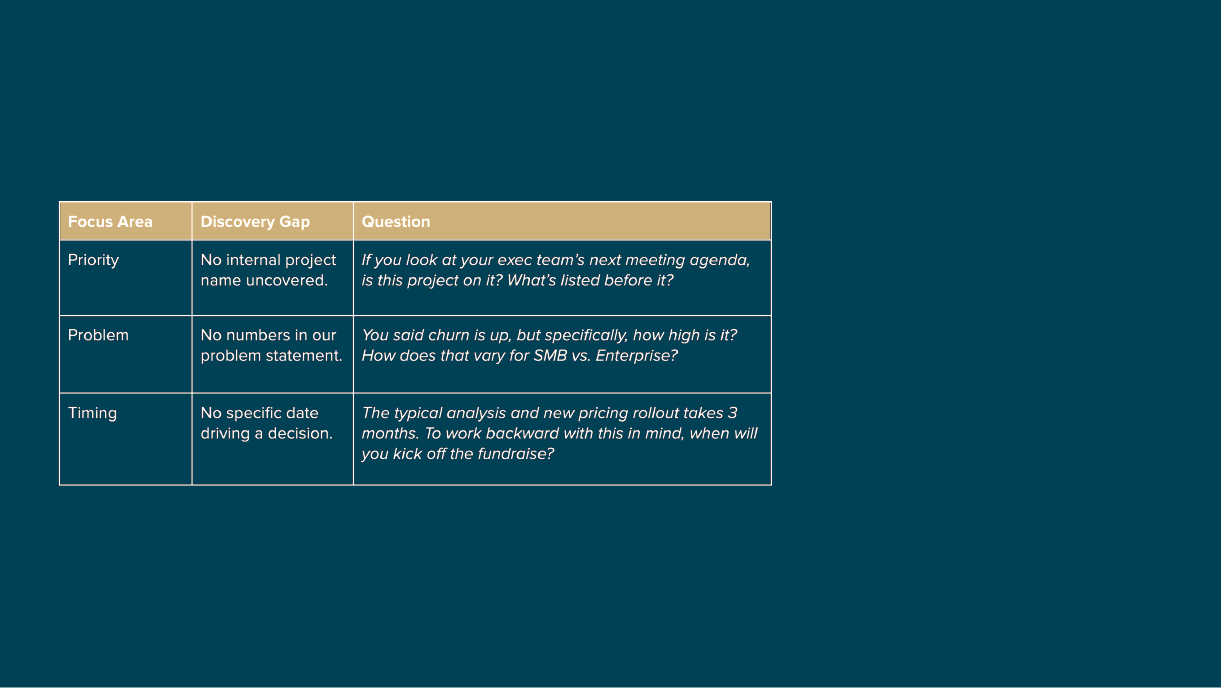How to Guide Low-Regret Buying Decisions and Stop Losing Deals to “No Decision”
I strongly believe we should start paying SPIFFs to AE's who get actual "no's" in their deals. (Which, yes, means paying some amount > $0 for a $0 revenue outcome.)
Hear me out:
The #1 job of an AE is to get a decision.
To run a process *with* your champion, that simplifies the path to either:
- A confident “yes.” Closed won.
- A clear “no.” Closed lost.
But in my opinion, it's that second one — a strong "no" — that's the hardest. Because getting to an actual "no" means you got 12+ people aligned on:
- The fact they need to make any decision in the first place
- Some type of "decision criteria" to guide it
- The path they chose
- Willingness to tell you why (instead of just "forgetting" to follow up)
Which is hard.
Just getting to #2 in that list means you framed up a high-cost, high-priority problem, and got the buying exec to an, "moment.
And THEN, guided their team to something other than "vibes" to choose what.
That's the job done well.
The 1-Page Business Case helps you do #1. I've written a lot about this already.
Now, here's a framework to help you do #2:
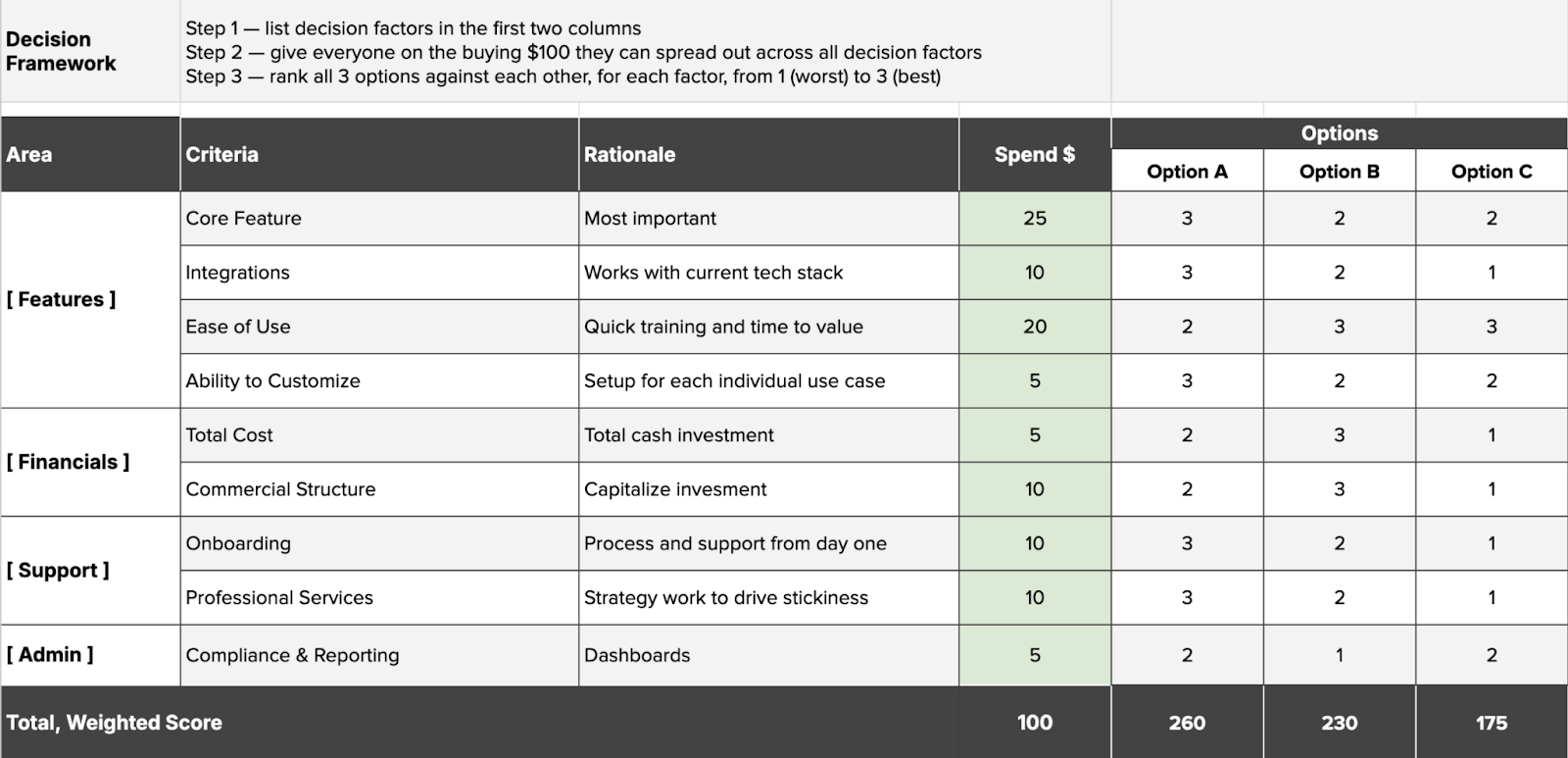
Here's how it works:
Step 1: Build the Wishlist
Have your champion ask everyone on the buying team for the top 3 items on their wishlist. What needs to be true of a solution, in their opinion?
The best approach is giving your champions a simple, forwardable email that links to a quick survey (there are 1,001 free options you can use).
Group them based on theme, then list them in the spreadsheet. It doesn't really matter how many you list out — you'll see why:
Step 2: Spend $100
Give the buying team "$100" they can spread out across all factors.
As soon as they realize they can't just list everything as "important" or "high priority" — and because they're free to spend $80 on one thing, and $0 on others — you'll start to find where the conflict is.
You'll see not just what's important, but how important.
Step 3: Ask Questions
You'll have to bring some thoughtful, engaging questions to keep them going. Don't let the convo just fizzle out when it gets hard.
Some examples:
- "What are we optimizing for that our customers don't actually care about?"
- "If our biggest competitor was in this room, what would make them 'happy,' thinking we way overweighted something here?"
- "If you had to bet your own salary here, would you spend the same way?"
- "What are we including because it sounds smart to leadership, vs. actually drives success?"
- In the last major project you planned: what seemed important at the time, but turned out to be irrelevant? What did you sleep on that came back to bite you?"
Step 4: List Approaches
We'd like to think our competition is who's listed in the same G2 or Gartner grid.
But it's not. If that's all you're playing against, you're missing entire categories of alternative options that puts you at risk of thinking too narrowly.
Instead, you've got to focus on why the approach you enable is the right pathway to a topline metric — compared to 10+ other drivers an executive could be focused on.
There's more detail on this here, and here's a simple example.
Let's say IKEA is trying to figure out how to boost online sales:
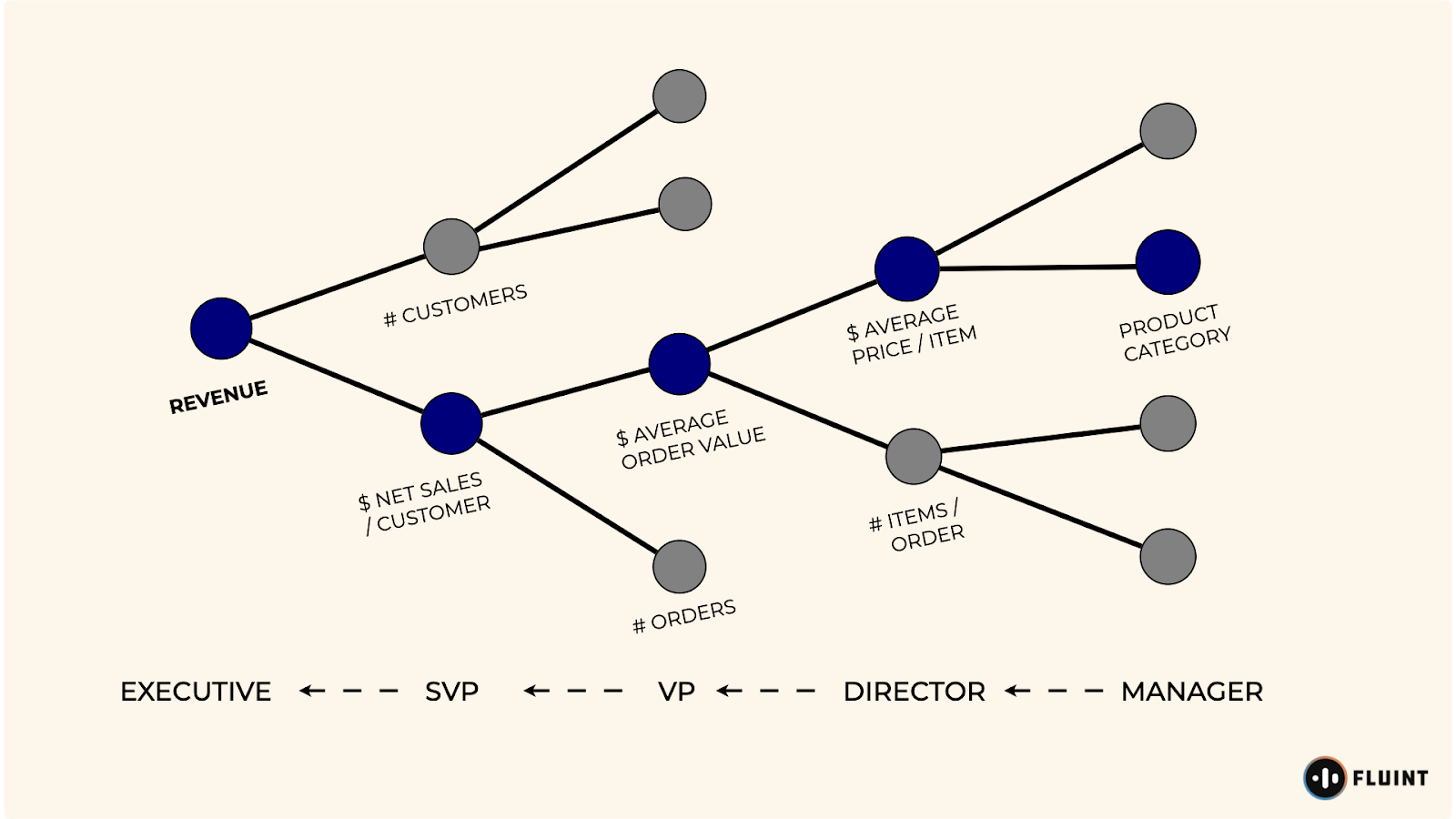
Now, let's say we sell Threekit, which is AI visual commerce.
We think there's an opportunity to drive up the Average Order Value, by tapping into the "large items" product category: Stuff like kitchens and closet organizers, which are tough for a customer to confidently hit "buy now" while browsing online.
They're high-priced items, but hard to visualize in your own space.
Now of course, there could be other drivers that are first in IKEA’s focus right now. Like increasing product bundles at checkout, to increase the # of products purchased:
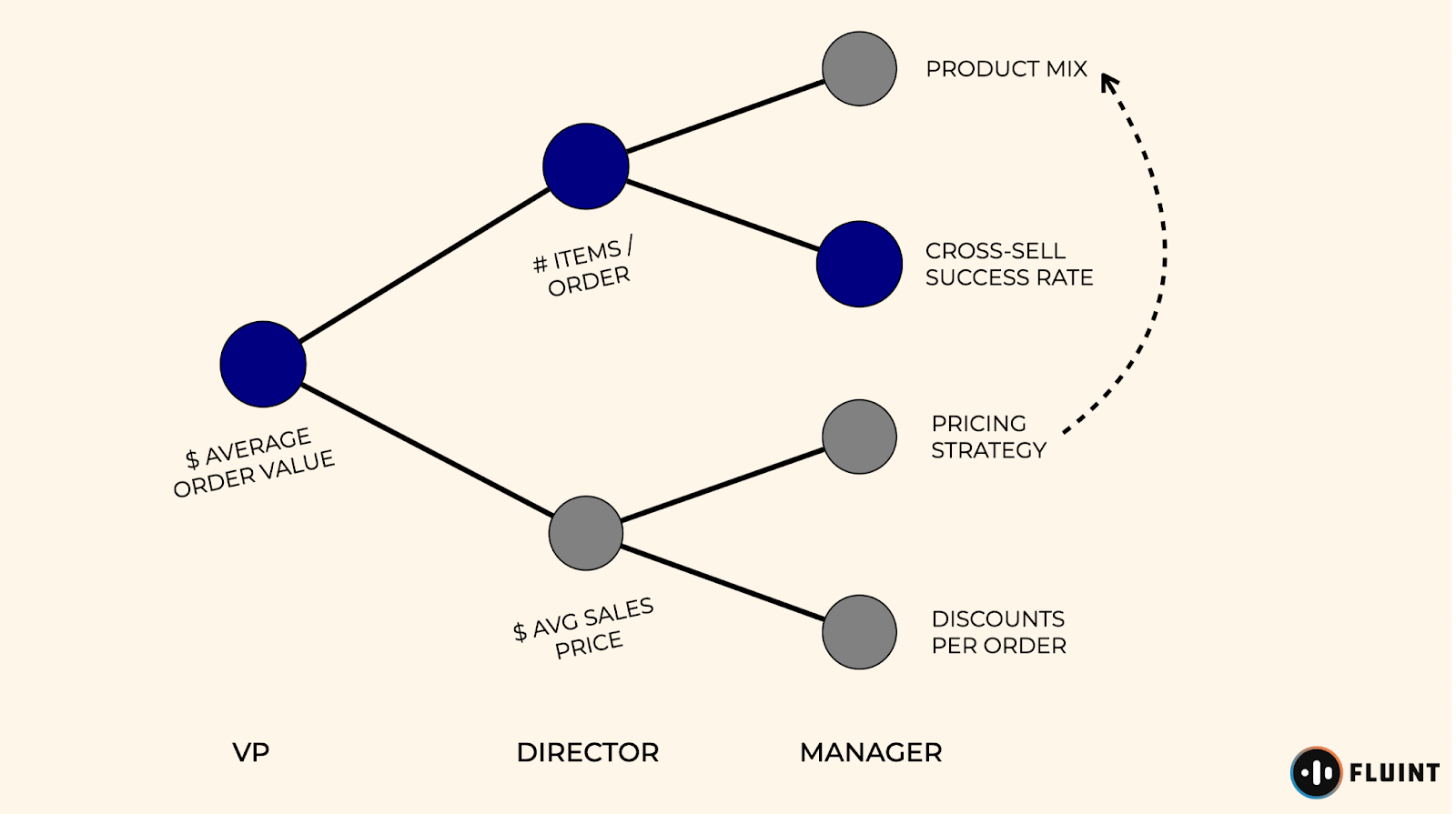
But, let’s say our narrative points out that large category sales is declining the fastest, as IKEA moves to "small format" stores in urban areas. So they can't stock full size items anymore, like they could in massive stores.
If we’re aligned on that driver path, that’s progress.
But next up, our competition may not be a Threekit competitor.
It could be someone else who says the main blocker for customers in the large items category is the upfront cost. Which means a "buy now, pay later option."
Or, it’s someone else who agrees it’s the “Imagination Gap” for customers, but says, "We can vibecode anything now! Let's build our own AR/VR solution internally!
So now, our 3 approaches to drive up large category, online sales are:
- Internal AR/VR Build
- Buying Threekit's Platform
- Buying a "Pay Later" Platform
Step 5: Stack-Rank Each Approach
Now, with the 3 different approaches laid out, we rank each from 1 (worst) to 3 (best).
So afterwards, we can do a weighted assessment. Applying the total $ devoted to each criteria, to the ranking we're giving each.Notice too, how the ranking acts as a multiplier:
If one approach is the strongest in a certain area (a 3 out of 3), we multiply the $ in that row by 3. Leaving us with this outcome:
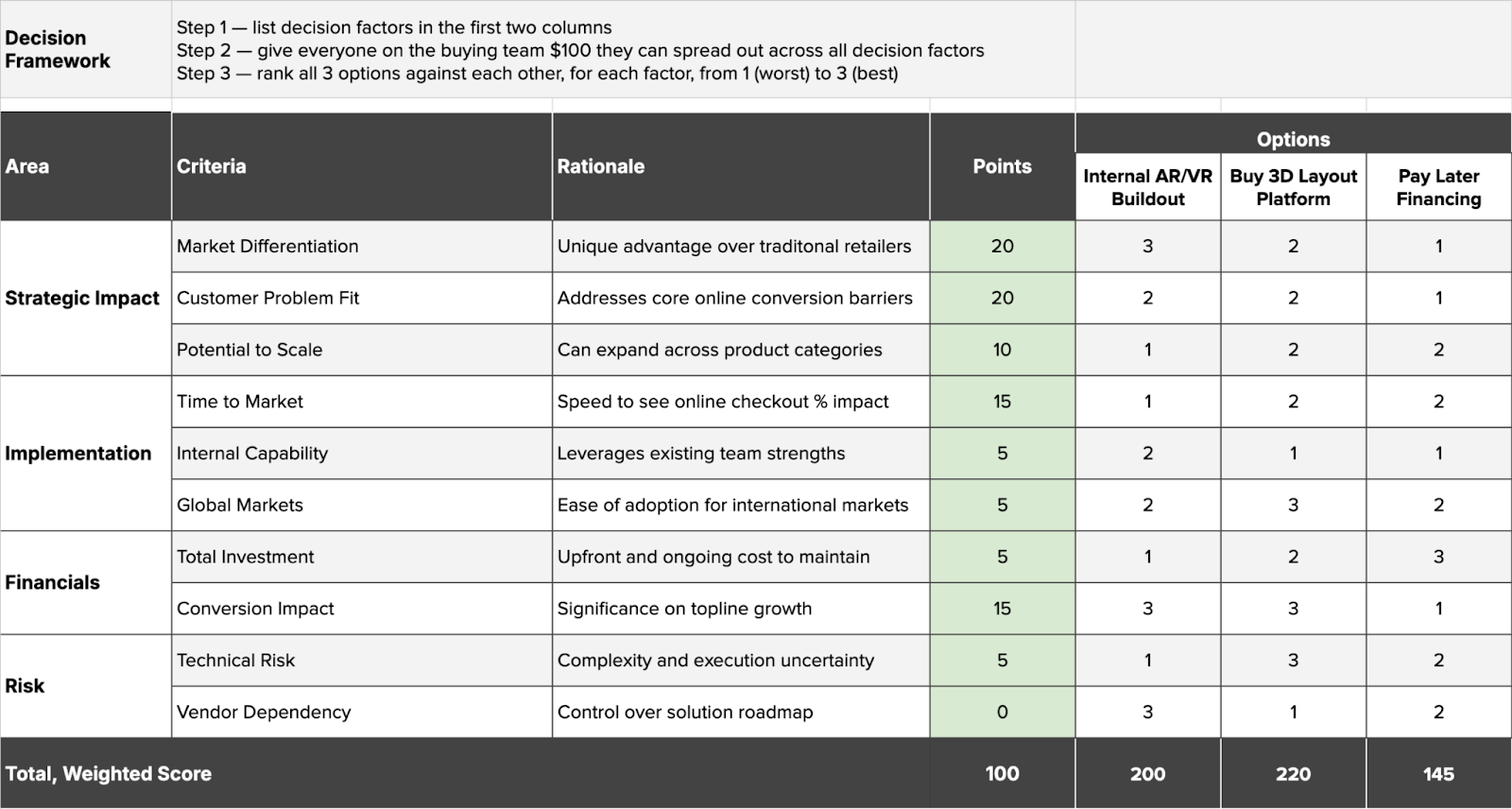
Step 6: Build the Case
Now, you've built a strong "recommended approach." Which takes you through 3 out of 5 sections inside the 1-Page Business Case framework:
1. Map to an Executive Priority
2. Frame Up a High-Cost Problem
3. Recommend the Approach
To finish things off, you'll want to build out the Target Outcomes & Required Investment sections. But that's for another post.
And if you're in a spot where you want to get rolling on all pieces, tag in Olli.
The AI agent who's been specifically trained on crafting frameworks like the Purchase Decision framework, and the 1-Page Business Case.
Sign up (if you're an AE), or grab a demo (if you're a leader), and let's get to work on a few of your deals, together:
PS: I don't think RFP's count in the SPIFF equation. Because unless you wrote the criteria, you were just handed how the customer's going to make a decision. You didn't actually work with a champion to enable a decision. The whole job of selling.
Why stop now?
You’re on a roll. Keep reading related write-up’s:
Draft with one click, go from DIY, to done-with-you AI
Get an executive-ready business case in seconds, built with your buyer's words and our AI.
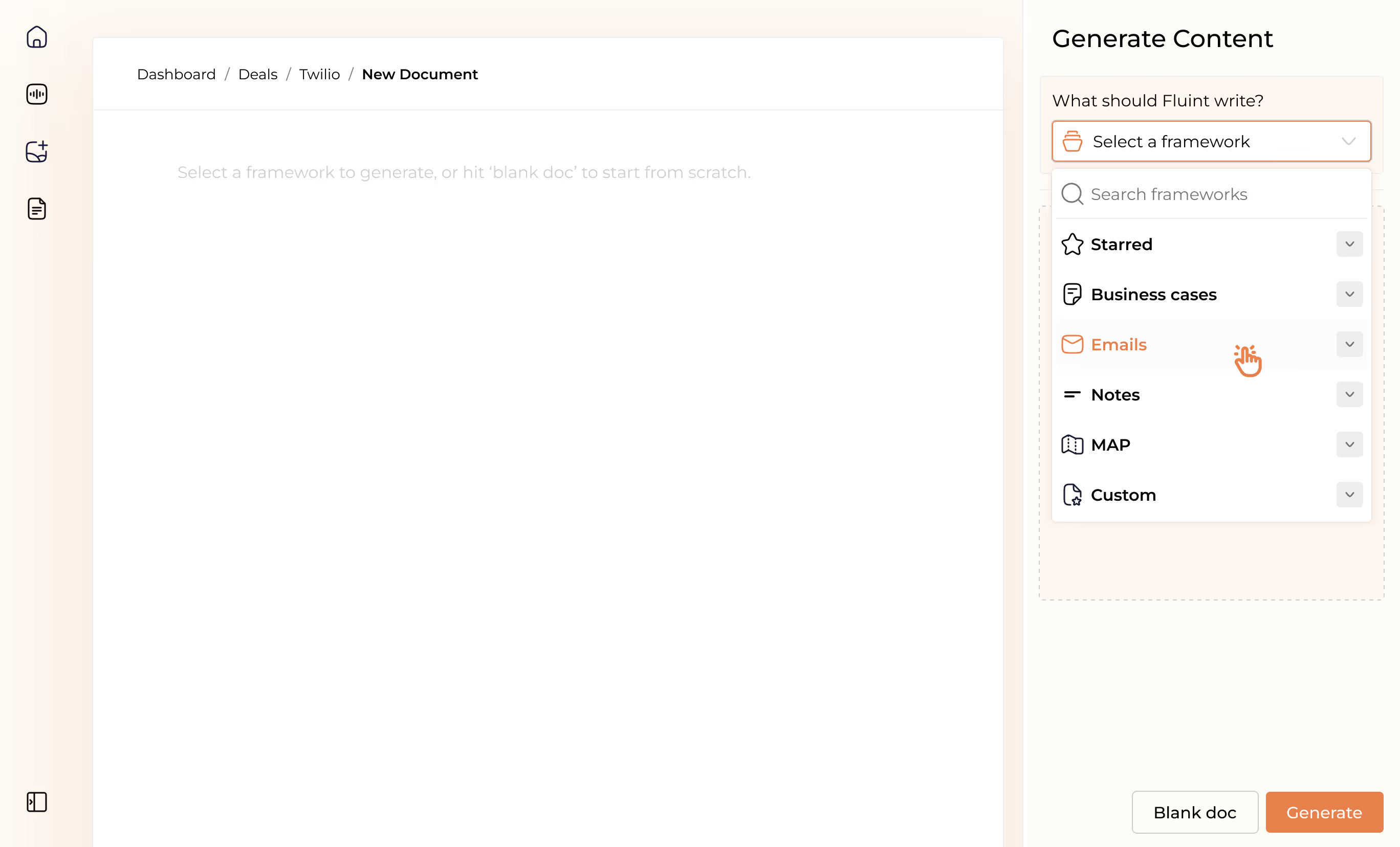
Meet the sellers simplifying complex deals
Loved by top performers from 500+ companies with over $250M in closed-won revenue, across 19,900 deals managed with Fluint

Now getting more call transcripts into the tool so I can do more of that 1-click goodness.



The buying team literally skipped entire steps in the decision process after seeing our champion lay out the value for them.


Which is what Fluint lets me do: enable my champions, by making it easy for them to sell what matters to them and impacts their role.



